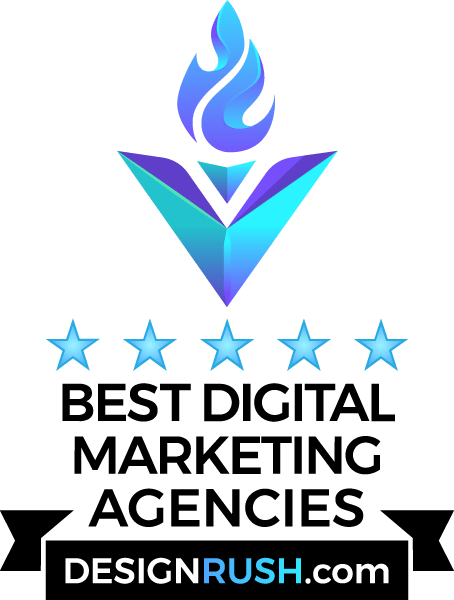The Marketing Tools Trap (And Why We Keep Falling For It)
Look, I get it. I’ve been there too. You’re scrolling through LinkedIn, and suddenly you see this amazing new tool that promises to 10x your marketing results. It looks sleek, the demo is impressive, and the testimonials are glowing. Before you know it, you’ve pulled out your credit card, convinced this is the missing piece to your marketing puzzle.
But here’s the thing – we need to talk about this addiction to marketing tools. Because that’s what it is – an addiction. And like any intervention, this might be a tough conversation, but it’s one we need to have.
I discovered this the hard way. A few months ago, I sat down to review our marketing expenses, and what I found was honestly embarrassing. We were paying for three different tools that all did the same thing, (yes, three), two email marketing platforms, and a handful of “revolutionary” AI tools that nobody had logged into for months. Each one seemed essential when we bought it. Each one promised to be the game-changer. Spoiler alert: they weren’t.
The worst part? We were spending way over budget each month on tools that were supposedly making us more efficient. Yet I was constantly annoyed about switching between platforms, forgetting passwords, and dealing with inconsistent data. That’s not efficiency – that’s chaos with a monthly subscription.
The Reality Check: What You Actually Need
Here’s what I’ve learned: the problem isn’t that these tools are bad. Many of them are actually quite good at what they do. The problem is that we’re approaching this all wrong. We’re building our marketing strategies around tools instead of finding tools that support our strategy.
Let’s talk about what you actually need. Strip away all the fancy features and shiny interfaces, and most marketing operations come down to a few core functions. You need to reach people, track what’s working, manage your content, and nurture relationships with your customers. That’s it. Everything else is just bells and whistles.
Think about it like cooking. You don’t need a separate gadget for every single task in the kitchen. A good chef can create amazing meals with just a few quality knives and basic equipment. The same principle applies to marketing. You don’t need a specialized tool for every minor task.
Building Your Foundation: The Essential Stack
I’ll share my foundation with you. At the heart of everything is solid analytics – this is your source of truth. No fancy predictions or complex dashboards. Just clean, reliable data that tells you what’s actually happening with your marketing efforts.
For me, this means Vbout Analytics combined with the one-off social platform reporting. I resisted the urge to buy expensive analytics platforms because, honestly, I wasn’t even using 10% of the basic features available to us.
Add to that a solid CRM (and no, you probably don’t need the enterprise version), a content management system that your team can actually use (emphasis on “actually use”), and some basic automation to keep things moving. The key here is “basic.” I’ve seen too many teams get caught up in creating complex automation workflows they never use, while simple email sequences and follow-ups would do the job just fine.
The Integration Game-Changer
Here’s where most people go wrong – they keep their tools in silos. They have great individual tools that don’t talk to each other. It’s like having a team of superstars who don’t pass the ball. Your tools need to work together. When I started focusing on integration rather than individual features, everything changed. My workflow became smoother, data became more reliable, and suddenly I wasn’t jumping between fifteen different tabs to get anything done.
Let me give you a real example. We used to have separate tools for social media scheduling, content planning, and analytics. Each one was “the best” in its category. But I was spending more time copying data between tools than actually engaging with our audience. Now we use a slightly less fancy all-in-one solution that handles everything. Is it the absolute best at everything? No. But it works seamlessly together, and that’s worth more than having the “best” individual tools.
The Money Talk
Let’s talk money because that’s really what this is about. Those $49/month subscriptions add up fast. And it’s not just the subscription costs – it’s the time your team spends learning new tools, the data that gets lost between platforms, and the opportunities missed because you’re too busy managing tools instead of actually marketing.
Here’s a sobering exercise I did: I calculated the total cost of our marketing tools, including the time spent managing them. For a “bargain” tool charging $29/month, we were actually spending closer to $200/month when you factored in the time spent on training, troubleshooting, and maintenance. Multiply that by several tools, and you’re looking at a significant overhead that’s not delivering proportional value.
I’ve learned to ask three questions before adding any new tool:
- What specific problem will this solve?
- Can any of our existing tools solve this problem?
- Will the time saved justify the cost and learning curve?
If I can’t answer these questions clearly, the tool is a no-go.
Scaling Smart: When and How to Add New Tools
As your business grows, you’ll need to add more tools. That’s normal. But there’s a right way to scale your tech stack. Start with the core functions, make sure they’re solid, then expand intentionally. When I need a new tool now, I test it thoroughly myself, first. No more company-wide rollouts of tools that end up in the digital graveyard three months later.
The key is to let your problems guide your purchases, not the other way around. Wait until you’re consistently hitting the limitations of your current tools before looking for new ones. And when you do add something new, make sure it integrates with your existing stack without creating more work.
My Current Stack: Keeping It Simple
Want to know what I actually use daily? My stack is probably simpler than you’d expect. I have one main analytics platform, one CRM, one content management system, and one marketing automation tool. (The great thing about mine is that they all exist in the same software platform.) They have all the features that I need, and more importantly, I actually use them. Everything else has to make a really strong case to get added to the mix.
The best part? Our marketing performance has improved since I’ve simplified. Turns out, when you’re not constantly switching between tools and troubleshooting integration issues, you can focus on what really matters – creating good content and connecting with your audience.
Your Action Plan: Starting Today
Here’s what you should do next: First, audit your current tools. Be honest about what you’re actually using. Cancel anything that hasn’t been logged into for the last three months. Then, map out your core marketing processes and identify the essential tools that support them. Focus on getting these working together perfectly before you even think about adding anything new.
Create a simple spreadsheet with three columns:
– Tools we currently pay for
– What each tool actually does for us
– When was the last time we used it meaningfully
This exercise alone might save you hundreds of dollars monthly.
The Bottom Line
Remember, the goal isn’t to have the most sophisticated tech stack in the industry. The goal is to have a tech stack that works for you, consistently and reliably. Sometimes that means saying no to the exciting new tool everyone’s talking about. And that’s okay.
Stop buying random marketing tools. Start building a system that actually works. Your wallet (and your sanity) will thank you.
And the next time you see that shiny new marketing tool in your LinkedIn feed? Take a deep breath, close the tab, and remind yourself that the best tool is the one you’ll actually use








0 Comments